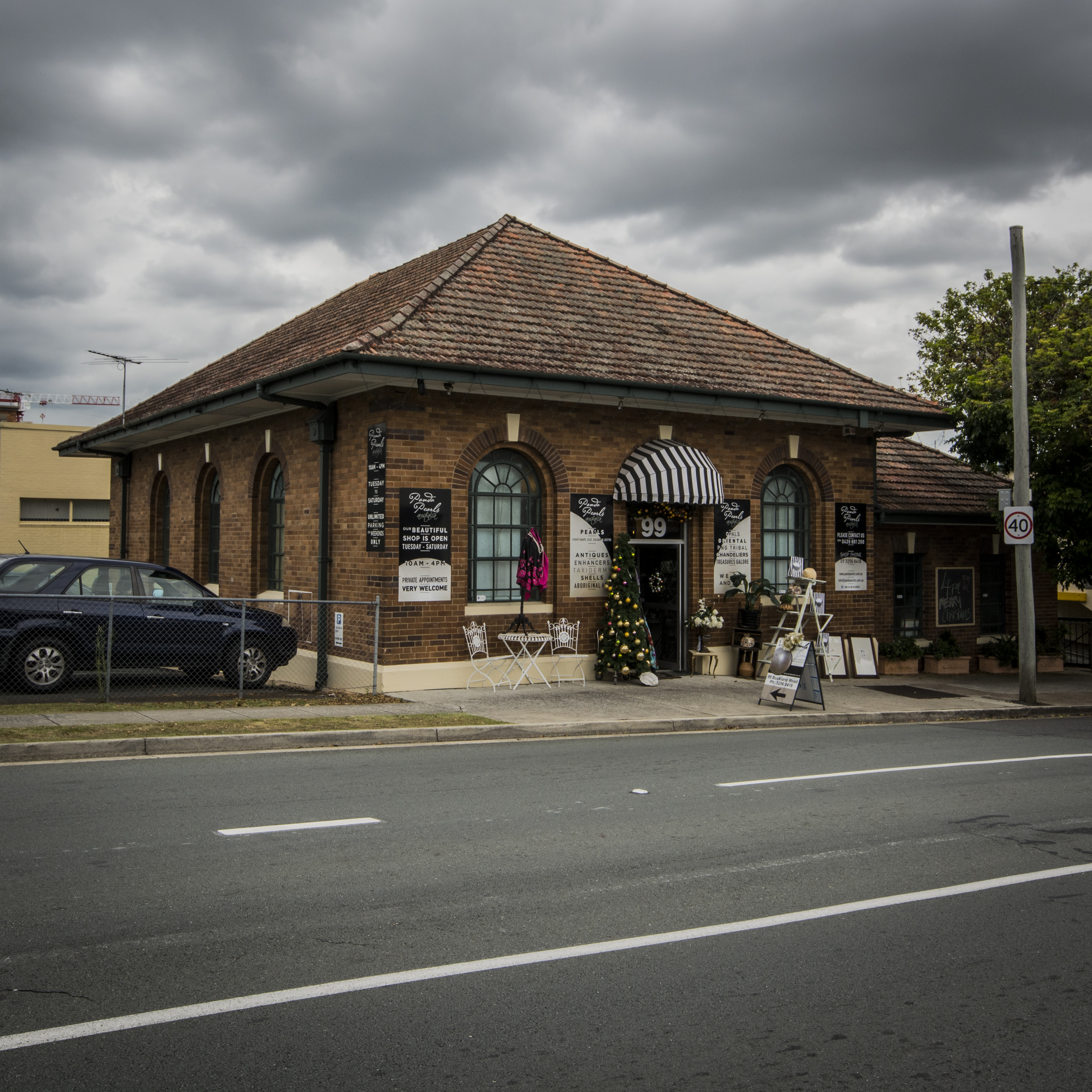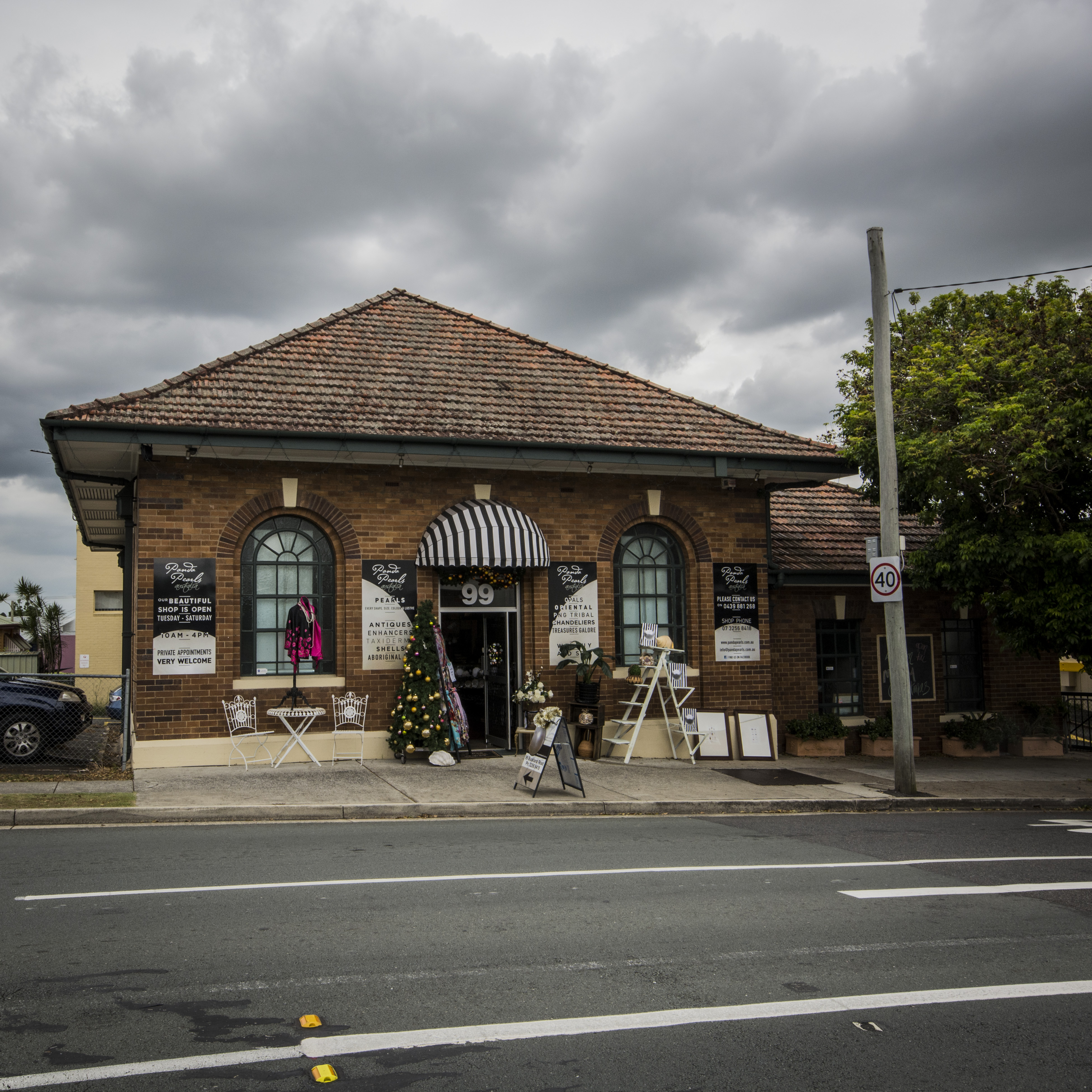Addresses
Type of place
Telephone exchange
Period
Interwar 1919-1939
Style
Free Classical
Addresses
Type of place
Telephone exchange
Period
Interwar 1919-1939
Style
Free Classical
The Telephone Exchange on Buckland Road was one of the first six fully automatic telephone systems in Brisbane. Built in 1927-28, the brick Telephone Exchange was constructed to meet the growing needs of the Nundah community as the locality underwent substantial commercial and residential growth during the interwar period.
Lot plan
L4_RP34090
Key dates
Local Heritage Place Since —
Date of Citation —
Construction
Roof: Terracotta tile;Walls: Face brick
People/associations
James Otwin, Department of Works and Railways (Architect)Criterion for listing
(A) Historical; (D) Representative; (E) AestheticInteractive mapping
Lot plan
L4_RP34090
Key dates
Local Heritage Place Since —
Date of Citation —
Construction
Roof: Terracotta tile;Walls: Face brick
People/associations
James Otwin, Department of Works and Railways (Architect)Criterion for listing
(A) Historical; (D) Representative; (E) AestheticInteractive mapping
History
In 1883 the Toombul Shire Council was created as a means of governing the ever-increasing district in this period. Serving a large area that spanned all the way to Pinkenba and incorporating suburbs such as Eagle Farm, Hamilton, Clayfield, Northgate and Nudgee, the council offices were at Breakfast Creek. In 1890 the council split and the Hamilton Division was formed. By the turn of the century the Nundah district had a population of 1675 people. The interwar period heralded major population and residential growth in the Nundah district. In 1921 the population in the area had reached 3870 and by 1931 was 15, 831. This can be attributed to the sale and subdivision of many of the remaining farms in the area.
The early arrival of the telephone at the ‘outer settlement’ of Nundah in 1898 occurred due to the fortunate occurrence of Nundah being located along the rail line between Brisbane and the holiday destination of Sandgate. The telephone is reputed to have reached Nundah as part of the line laid between the Brisbane exchange and Sandgate. By 1900 Nundah had at least three telephone subscribers. By 10 June 1904 the Nundah Public Call Office had come into operation after an expenditure of£18/12/9 allowed the area to be connected to the Albion Manual Telephone Exchange. Until this time the Brisbane Central Manual Exchange (opened in 1880) had served all of Brisbane and this had lasted until the Toowong and Albion exchanges were opened.
At the end of 1922 there were approximately 1200 telephone lines to Nundah and the existing mechanisms were outdated and proving to be inadequate. This was to be remedied by the installation of “the then modern Siemens 16 “step by step” automatic exchange equipment of 1500 lines”. With a capacity of 3,500 lines it was to be installed in a new single story brick building.
The erection of the brick building on Buckland Road was part of a Brisbane wide expansion and upgrade of the telephone system. In 1925 the very first automatic telephone exchange was opened in South Brisbane. This was quickly followed with the construction of automatic exchanges at Albion and Newmarket in 1926.
The plans for the Nundah Telephone Exchange were drawn in September 1926, with modified plans being submitted in March 1927. The building was erected during the period 1927-28. As the Post Office and telecommunications were both part of the one Commonwealth Government Department (The Post Master General’s Department) the building was conveniently located at the rear of the Nundah Post Office. The Nundah exchange was brought into service on 26 May 1928, the same time as telephone exchanges located at Sherwood, Bulimba and Yeronga.
The Nundah Telephone Exchange building is important to the Nundah area as it was constructed to meet the growing needs of the Nundah community as the locality underwent substantial commercial and residential growth during the interwar period. An increased telephone capacity was essential to meet this demand. As one of the first automatic telephone exchanges built in Brisbane in the 1920s, the Nundah Telephone Exchange demonstrates the shift from manual to automated telecommunication systems in Brisbane.
Description
This is an austere building symmetrically planned that is predominantly of brick on a rendered brick base. The long elevation faces Buckland Road, in Nundah, with a smaller wing attached to the right of its main entry along this road.The elevation from Buckland Road has a row of arched sash windows above each window is a large stone lintel. Similarly, three arched casement windows are evenly spaced along every facade of the main building. The main entry door is centred between two arched windows on the main building, along the Buckland Road facade. The roof along this front has a transverse hipped tiled roof with a low adjoining hipped roof extension to the right of the building and large roof overhang.
Statement of significance
Relevant assessment criteria
This is a place of local heritage significance and meets one or more of the local heritage criteria under the Heritage planning scheme policy of the Brisbane City Plan 2014. It is significant because:
References
-
Brisbane City Council Detail Plans
-
Commonwealth Archives. Plans for Nundah Automatic Telephone Exchange. W3223 (amended Plan. Dated 31/3/1927). W3072 ( First Plan. Dated. 27/10/1926)
-
Nundah and Districts Historical Society files
-
Post Office Directories.
-
Rea, Malcolm. An Australian Post Office History: Nundah. (Australia Post. 1972)
-
Nundah & Districts Historical Society, From Pioneering Days – Nundah-Northgate Virginia. (2002)
-
“Corpus Christi Church”; “First Free Settlers Monument”; “Toombul Shire Hall (former)”; “Workers’ Dwelling No. 1”, Department of Environment and Resource Management, Heritage Citation
-
University of Queensland, Queensland Places, http://queenslandplaces.com.au/home
-
Booroodabin: A Sesquicentenary History of Breakfast Creek, Bowen Hills, Newstead and Teneriffe, 1823-2009, The Queensland Women’s Historical Association Inc, 2009
-
Lawson, Ronald 1973, Brisbane in the 1890s: A Study of an Australian Urban Society, University of Queensland Press, St. Lucia
-
The Brisbane Courier, Thursday 21 November 1929, p15
-
The Brisbane Courier, Saturday 26 May 1928, p16
-
The Brisbane Courier, Friday 30 September 1927, p14
-
The Brisbane Courier, Tuesday 23 November 1926, p8
-
The Brisbane Courier, Saturday 2 February 1924, p15
Citation prepared by — Brisbane City Council (page revised September 2021)


